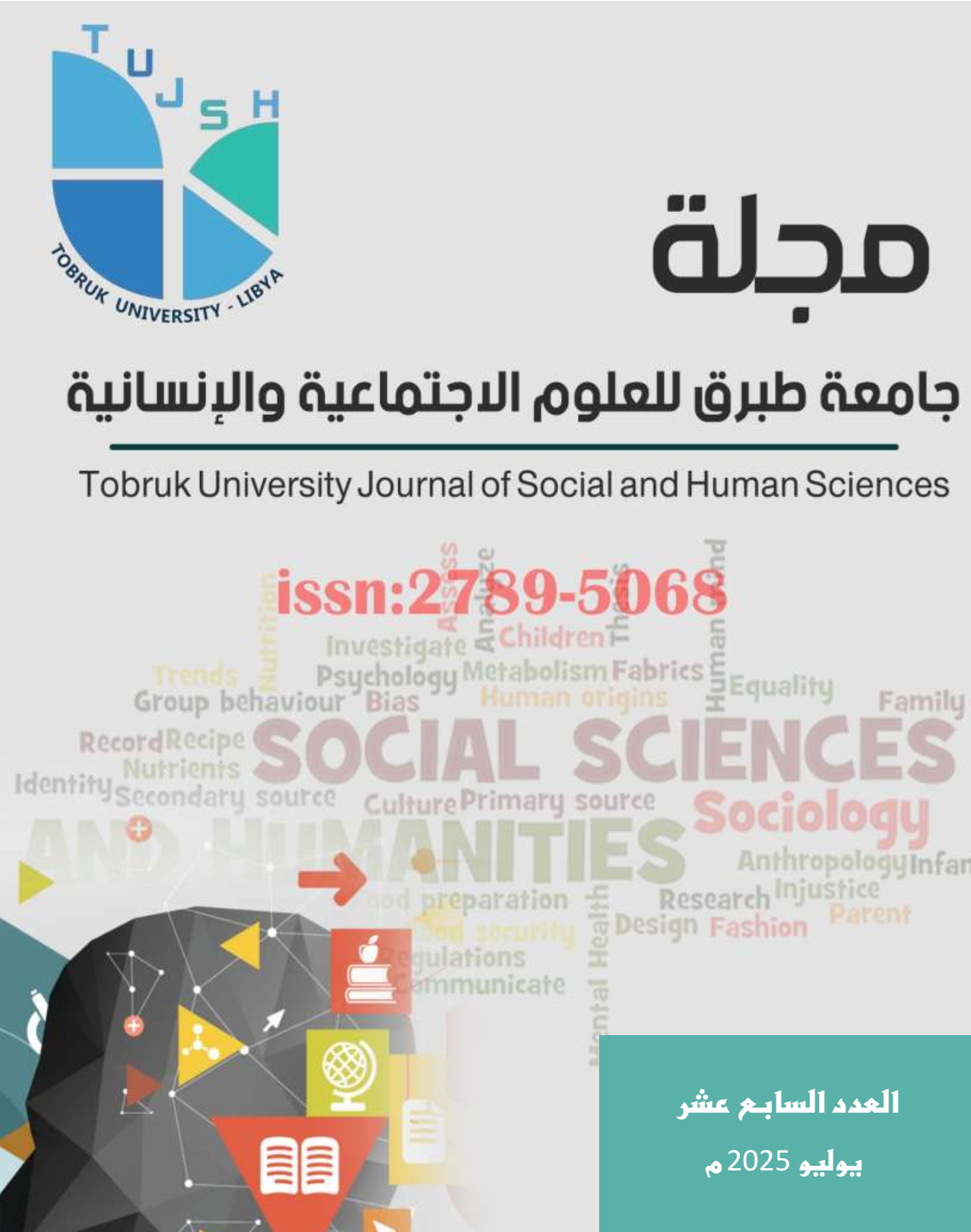The Development of Primitive Thought and the Precursors of the Agricultural Revolution in Prehistoric Times
An Analytical Study of the Mental and Behavioral Transformation of Humans before the Neolithic Era
DOI:
https://doi.org/10.64516/zqzg2p52Keywords:
Primitive thought, Agricultural revolution, Mythic mind, Cyclical time, Ecological knowledgeAbstract
This study examines the evolution of primitive thought and the precursors of the agricultural revolution during prehistoric times through an analytical study of the mental and behavioral transformations of humans prior to the Neolithic era. The research highlights the importance of mythic and figurative thinking in shaping early human consciousness, wherein humans perceived nature as a living entity intertwined with spirits and symbols, laying the foundation for religious systems and social symbolism. It also explores the concept of cyclical time and collective memory, which helped establish a periodic temporal model linked to rituals and seasonal cycles—an essential framework for understanding agricultural rhythms. Furthermore, the study emphasizes the accumulation of traditional ecological knowledge and the critical role of environmental observation in preparing the cognitive groundwork for agriculture. It also addresses the transition from a nomadic to a sedentary lifestyle connected to place attachment and notions of ownership. These mental and symbolic transformations were fundamental in paving the way for the agricultural revolution, which was not a sudden material leap but the result of a prolonged cognitive and cultural accumulation
References
1. Assmann, J. (2011). Cultural Memory and Early Civilization: Writing, Remembrance, and Political Imagination. Cambridge University Press.
2. Bell, C. (1992). Ritual Theory, Ritual Practice. Oxford University Press.
3. Bellwood, P. (2005). First Farmers: The Origins of Agricultural Societies, Oxford: Blackwell,.
4. Berkes, F. (2012). Sacred Ecology (3rd ed.). Routledge.
5. Bisson, M. S. (1996). The "Venus" Figurines: Texts, Images, and Meanings. Antiquity.
6. Burkert, W. (1985). Greek Religion: Archaic and Classical. Harvard University Press.
7. Campbell, J. (2008). The Hero with a Thousand Faces. New World Library.
8. Cauvin, J. (2000). The Birth of the Gods and the Origins of Agriculture. Cambridge University Press. (pp. 105–140)
9. Clark, J. G. D. (1975). The Mesolithic Settlement of Northern Europe. Cambridge University Press.
10. Clottes, J. & Lewis-Williams, D. (1998). The Shamans of Prehistory: Trance and Magic in the Painted Caves, Harry N. Abrams.
11. Diamond, J. (1997). Guns, Germs, and Steel: The Fates of Human Societies. W. W. Norton.
12. Eliade, M. (1958). Patterns in Comparative Religion. Sheed & Ward.
13. Eliade, M. (1959). The Sacred and Profane: the The Nature of Religion (W. R. Trask, Trans.). Harcourt, Brace & World.
14. Eliade, M. (1963). Myth and Reality, Harper & Row.
15. Eliade, M. (1978). A History of Religious Ideas, Vol. 1, University of Chicago Press
16. Gamble, C. (1999). The Paleolithic Societies of Europe. Cambridge University Press.
17. Gamble, C. (2007). Origins and Revolutions: Human Identity in Earliest Prehistory. Cambridge University Press.
18. Gero, J. M. & Conkey, M. W. (1991). Engendering Archaeology: Women and Prehistory, Blackwell,.
19. Gimbutas, M. (1989). The Language of the Goddess. Harper & Row.
20. Halbwachs, M. (1992). On Collective Memory (L. A. Coser, Ed. & Trans.). University of Chicago Press.
21. Hayden, B. (1995). “Pathways to power: Principles for creating socioeconomic inequalities.” In Foundations of Social Inequality, eds. Price & Feinman, New York: Plenum,
22. Hodder, I. (1990). The Domestication of Europe: Structure and Contingency in Neolithic Societies. Blackwell.
23. Hodder, I. (2006). The Leopard’s Tale: Revealing the Mysteries of Çatalhöyük, Thames & Hudson,.
24. Hodder, I. (2010). Religion in the Emergence of Civilization: Çatalhöyük as a Case Study. Cambridge University Press,.
25. Hoskin, M. (2001). Tombs, Temples and Their Orientations: A New Perspective on Mediterranean Prehistory, Ocarina Books.
26. Ingold, T. (2000). The Perception of the Environment: Essays on Livelihood, Dwelling and Skill, Routledge,.
27. Larson, G., & Fuller, D. Q. (2014). The Evolution of Animal Domestication. Annual Review of Ecology, Evolution, and Systematics. 45, 115–136.
28. Legge, A. & Rowley-Conwy, P. (2000). “The exploitation of animals.” In Archaeology of the Near East, ed. Kuijt, I.,.
29. Leick, G. (1994). Sex and Eroticism in Mesopotamian Literature. Routledge.
30. Lévi-Strauss, C. (1966). The Savage Mind. University of Chicago Press.
31. Lewis-Williams, D. (2002). The Mind in the Cave: Consciousness and the Origins of Art, Thames & Hudson.
32. Mithen, S. (1996). The Prehistory of the Mind: The Cognitive Origins of Art, Religion and Science. Thames & Hudson.
33. Nazarea, V. D. (1999). Ethnoecology: Situated Knowledge/Located Lives. University of Arizona Press.
34. Renfrew, C. (2007). Prehistory: The Making of the Human Mind. Modern Library.
35. Renfrew, C. (2007). Prehistory: The Making of the Human Mind. Weidenfeld & Nicolson.
36. Schmidt, K. (2010). Göbekli Tepe – The Stone Age Sanctuaries, Berlin: Ex Oriente.
37. Sherratt, A. (1983). “The Secondary Products Revolution.” World Archaeology. 15(1),.
38. Smith, B. D. (2001). “Low-Level Food Production,” Journal of Archaeological Research, 9(1),.
39. Soffer, O., Adovasio, J. M., & Hyland, D. C. (2000). The "Venus" Figurines: Textiles, Basketry, Gender, and Status in the Upper Paleolithic. Current Anthropology, 41(4), 511–537.
40. Vernant, J.-P. (1983). Myth and Thought among the Greeks. Routledge & Kegan Paul.
41. Watkins, T. (2011). “New light on Neolithic revolution in southwest Asia.” The Review of Archaeology.
42. White, R. (2000). Prehistoric Religion: Myth, Ritual, and Social Change. University of California Press.
43. Zeder, M. A. (2006). “Archaeological approaches to documenting animal domestication.” In Journal of Archaeological Method and Theory, 13(1),.
44. Zohary, D., Hopf, M., & Weiss, E. (2012). Domestication of Plants in the Old World (4th ed.). Oxford University Press.
45. Zvelebil, M. (1996). “The Agricultural Transition in Europe,” in The Origins and Spread of Agriculture and Pastoralism in Eurasia, ed. D. R. Harris, UCL Press,.
46. Zvelebil, M., & Lillie, M. (2000). Transition to Agriculture in Eastern Europe. In T. D. Price (Ed.), Europe’s First Farmers (pp. 57–92). Cambridge University Press.
Downloads
Published
Versions
- 2025-08-11 (2)
- 2025-08-11 (1)
Issue
Section
License
Copyright (c) 2025 د. خالد آدم أحميدة جاب الله (Autor/in)

This work is licensed under a Creative Commons Attribution 4.0 International License.








